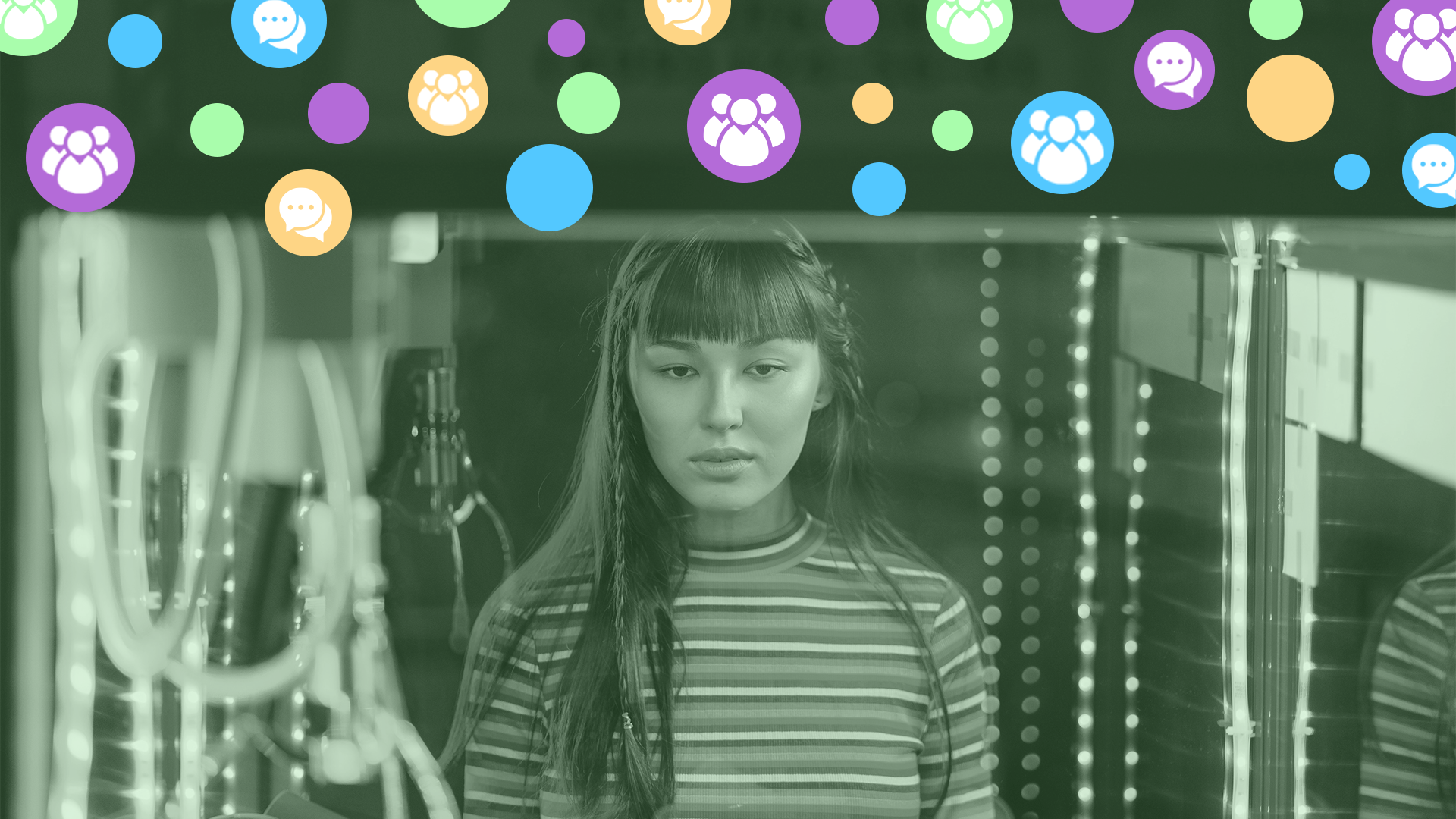Emerging tech: Audience & conversation analysis using Audiense, Onalytica & social listening
Technology continues to be one of the fastest growing industries, with smaller gadgets, quicker speeds, and greater capacity. One area that continues to emerge is the Internet of Things, and this became a topic and audience that we were keen to investigate. Our aim was to find its influencers and their communities, and then to explore what other niche subtopics there were discussing, and to gather an audience that we could activate in a campaign.
The Internet of Things (commonly referred to as IoT) is a term used to describe the connection, or network, between physical objects that are embedded with a technology that allows them to share their data with other systems and devices via the internet. As tech continues to evolve rapidly, the quantity of ‘things’ that fall within this bracket is increasing. From wireless sensors, to machine learning, to smart home devices. Yet, with this comes many questions regarding privacy and security.
So, when we want to tap into this expansive topic and audience, what do we do?
- Segment the influencers in Audiense - who are they?
- Identify lookalikes - prepare this audience for activation
- Listen to the influencers, and the influencers’ influencers, in a social listening platform (as a full audience or within their community) - what do they talk about, how do they behave?
Segment the influencers in Audiense - who are they?
Within the ocean of voices and vocabulary relevant to the Internet of Things, and the directions that this could take, we started with a list of 500 people influential within the sphere of the IoT, provided to us by our friends at Onalytica. We uploaded the list into Audiense, and ran a segmentation report.
The communities, as expected, had some cross-overs, but could still be distinguished as: Speakers/Authors, Cybersecurity/FinTech, Professors/Researchers, Marketers/Bloggers, and French Digital.
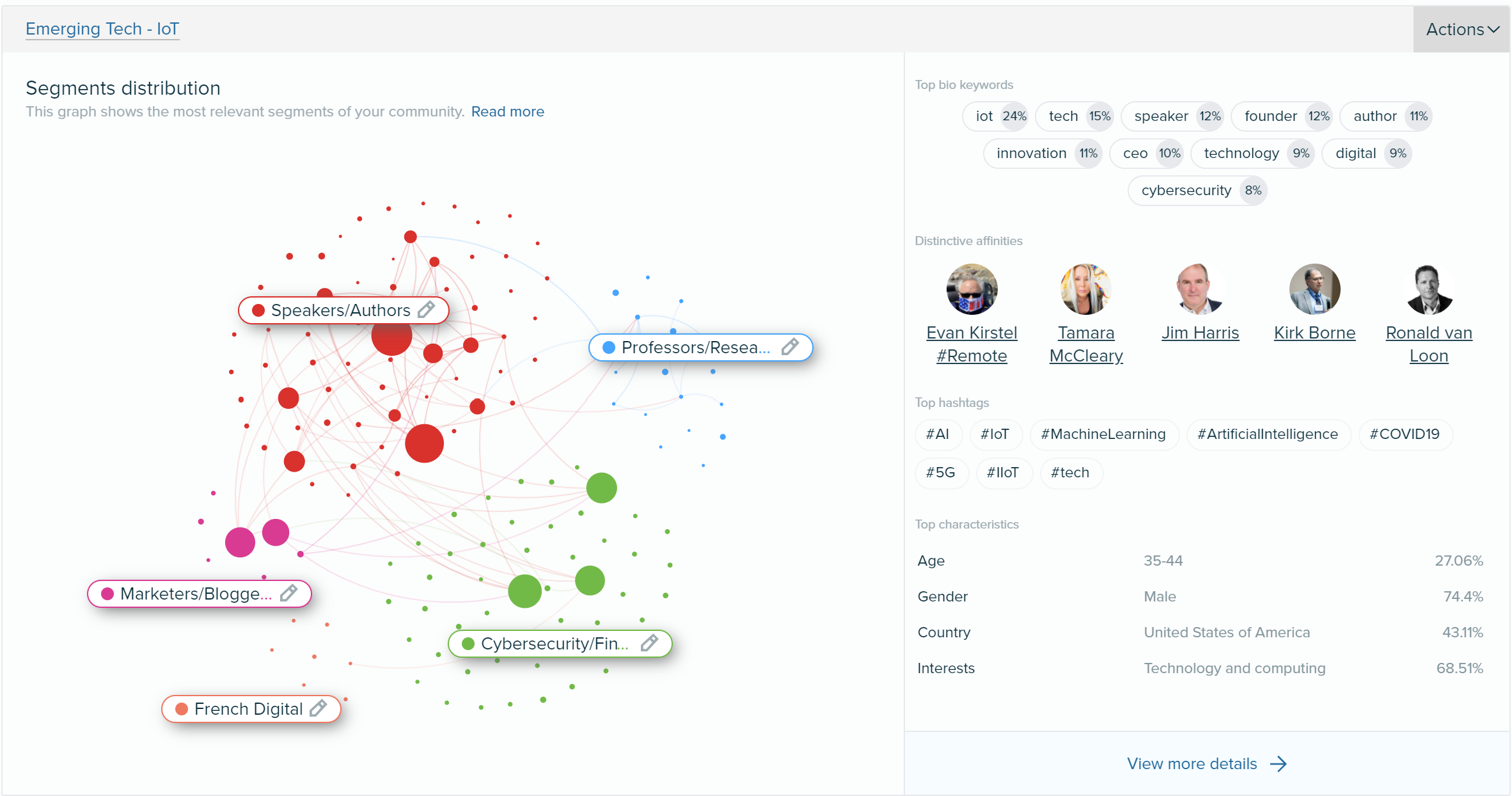
Considering we’re looking at an Influencer-based network, it shouldn’t be too surprising that the largest segment is predominantly made of self-professed pros in the industry. Even at the general audience level, these are people that come from news or academic positions, rather than the engineers and developers behind this tech. Considering the new depths of exploration that the IoT reaches, it makes sense that influencers are coming from places of knowledge, and can supply an audience with latest developments in the field, and growing trends.
As a general audience, 75% were male, and 25% used ‘IoT’ in their bio alongside defining themselves through other relevant hashtags, most likely to be found on LinkedIn and Medium before any other social networking site.
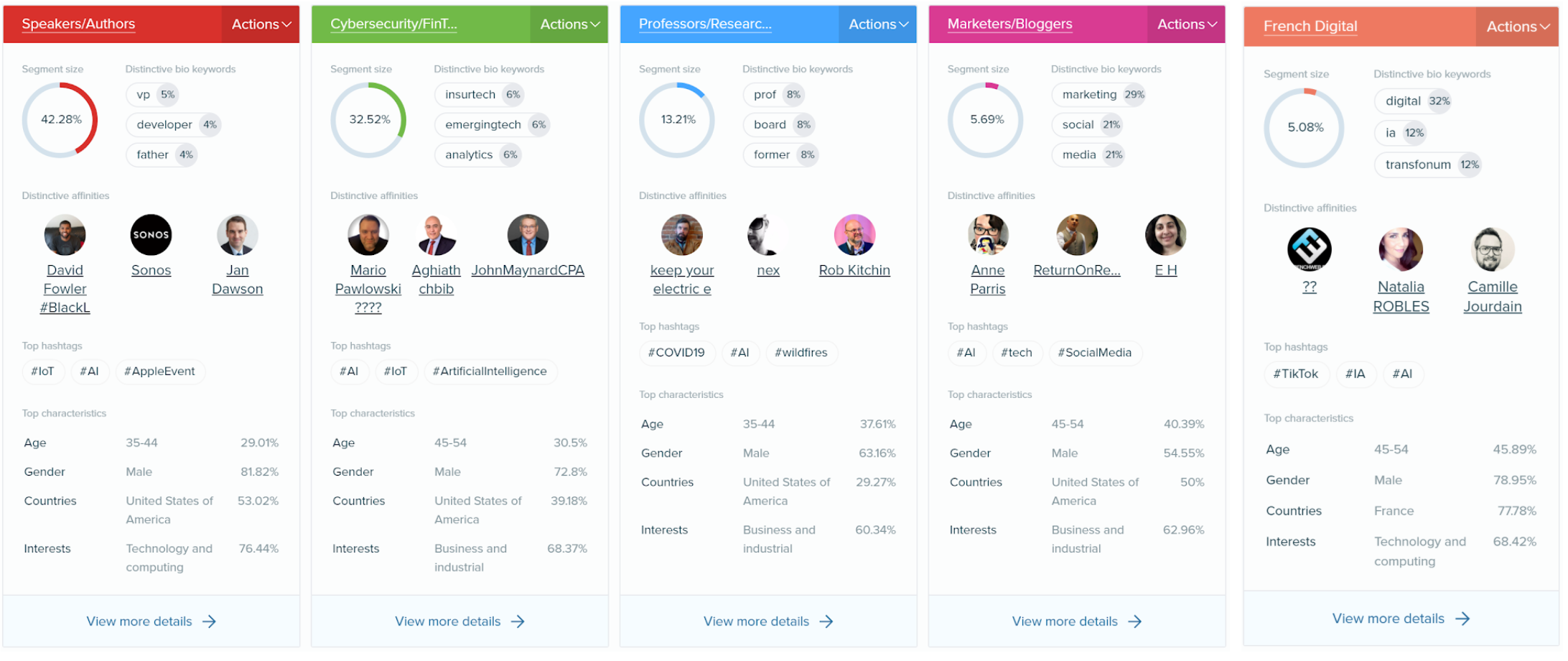
Identify lookalikes - prepare this audience for activation
This report gave us insight into the audience and its communities,and identifies who influences our original influencer list. This allows us to expand our original audience via identifying their lookalikes. We can activate this new list and distribute content at scale through these amplifying influencers.
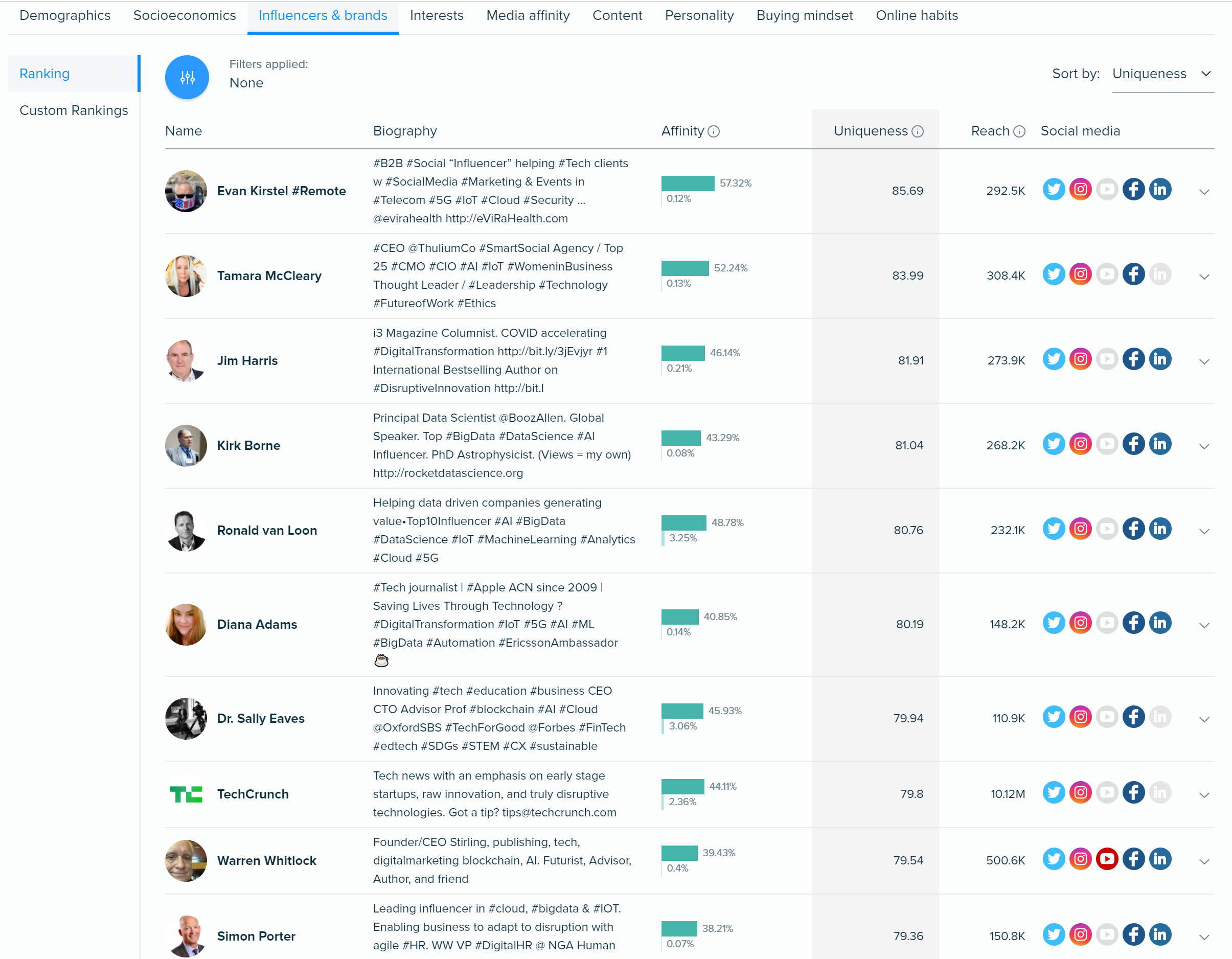
Another function of the segmentation report is to see which of the Onalytica influencers (the original audience) are the most influential in each segment! By switching to ‘custom ranking’ and using the Onalytica list, we can see that only 252 profiles are actually relevant to the Cybersecurity/Fintech segment.
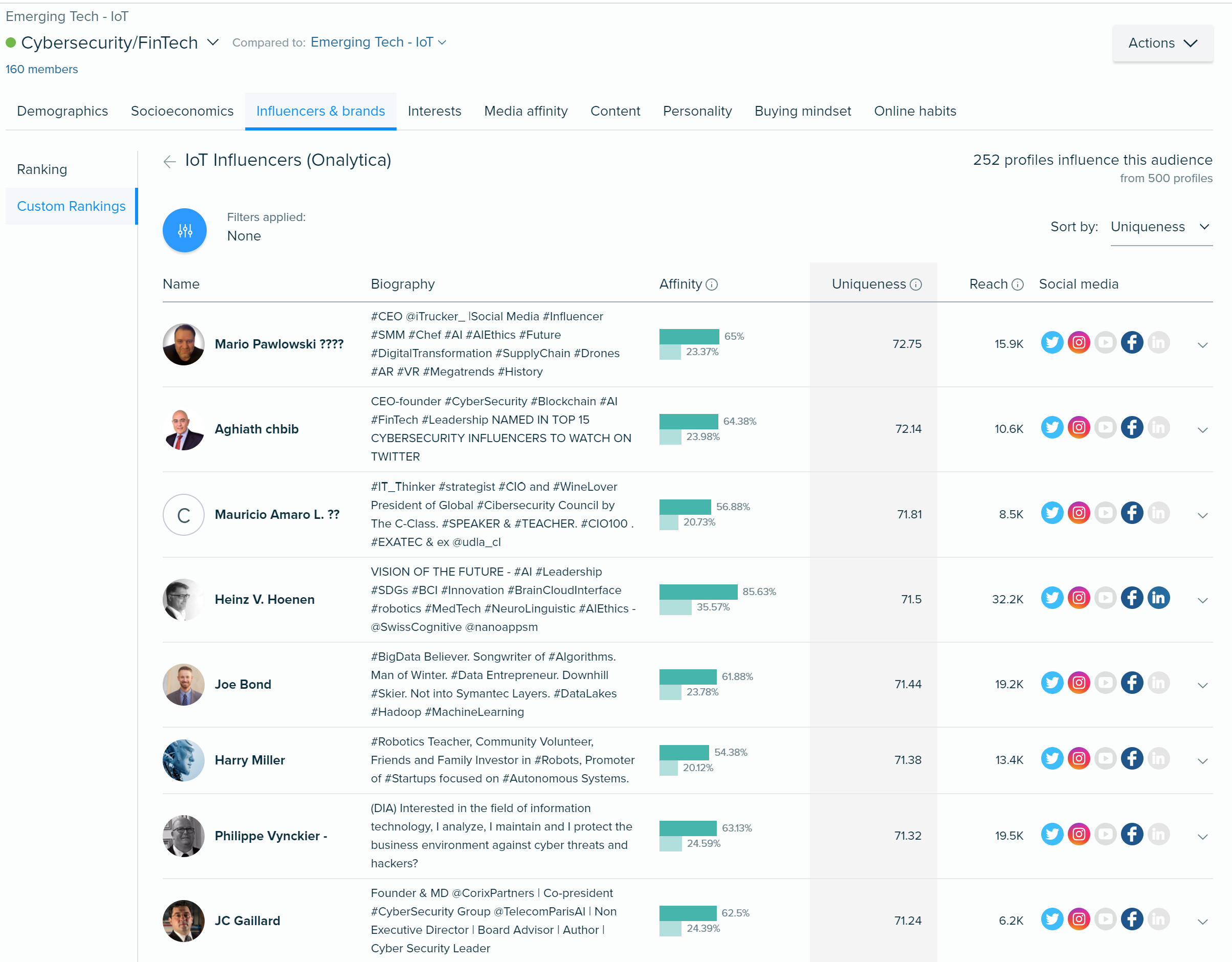
There’s a few ways we can explore and frame the data to give us the best view for what we’re looking to achieve.
In the next step, we locate the niche conversations and subtopics being added to by this Audiense. We took to a social listening platform to create Author panels of the Onalytica influencers and the Audiense lookalikes.
Listen to the influencers, and the influencers’ influencers, in a social listening platform - what do they talk about, how do they behave?
Using Onalytica’s list of influencers, and exploring their conversations within the year to date (up to mid October 2020) points us in the direction of the topics this audience is engaging with online. In turn, revealing what we should put in front of them if we want to be relevant in content and messaging.
When we looked at the keywords this audience were using, it seemed related to their industry sphere, but also somewhat noisy and vague, particularly with the coronavirus crisis pushing through in the negative panel. Though, generally, the use of emojis suggest a positive, joyful, and celebratory community.

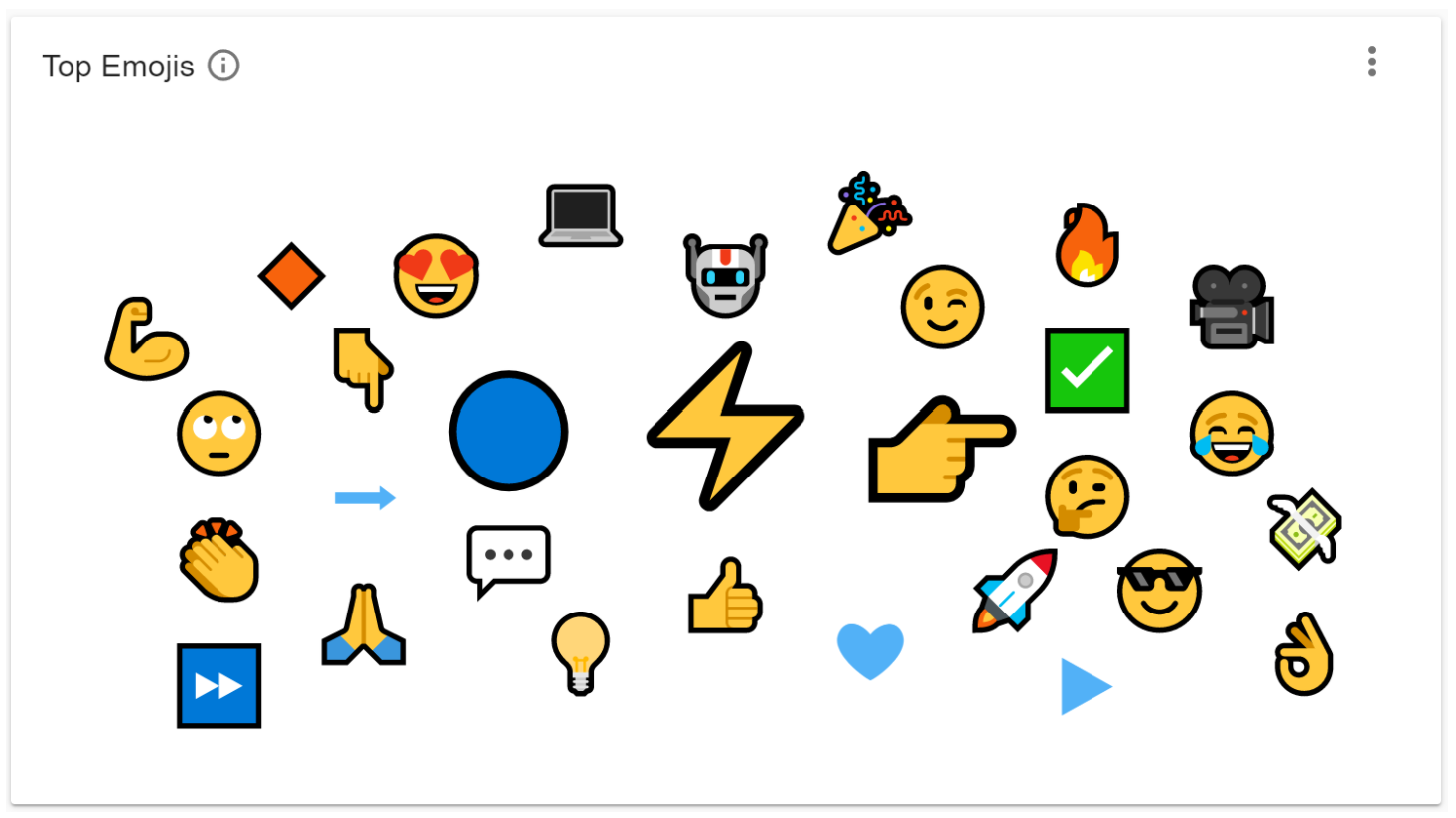
When looking at the top hashtags, #iot did appear in the top 2 for this community, as we could have expected. This validated the audience further, as well as confirmed a potential filter to use on the conversations either to focus in on, or remove from view. Drilling into any of the top performing hashtags shifts the surrounding keywords and hashtags to become more topic focused, and can be used to inform strategy.
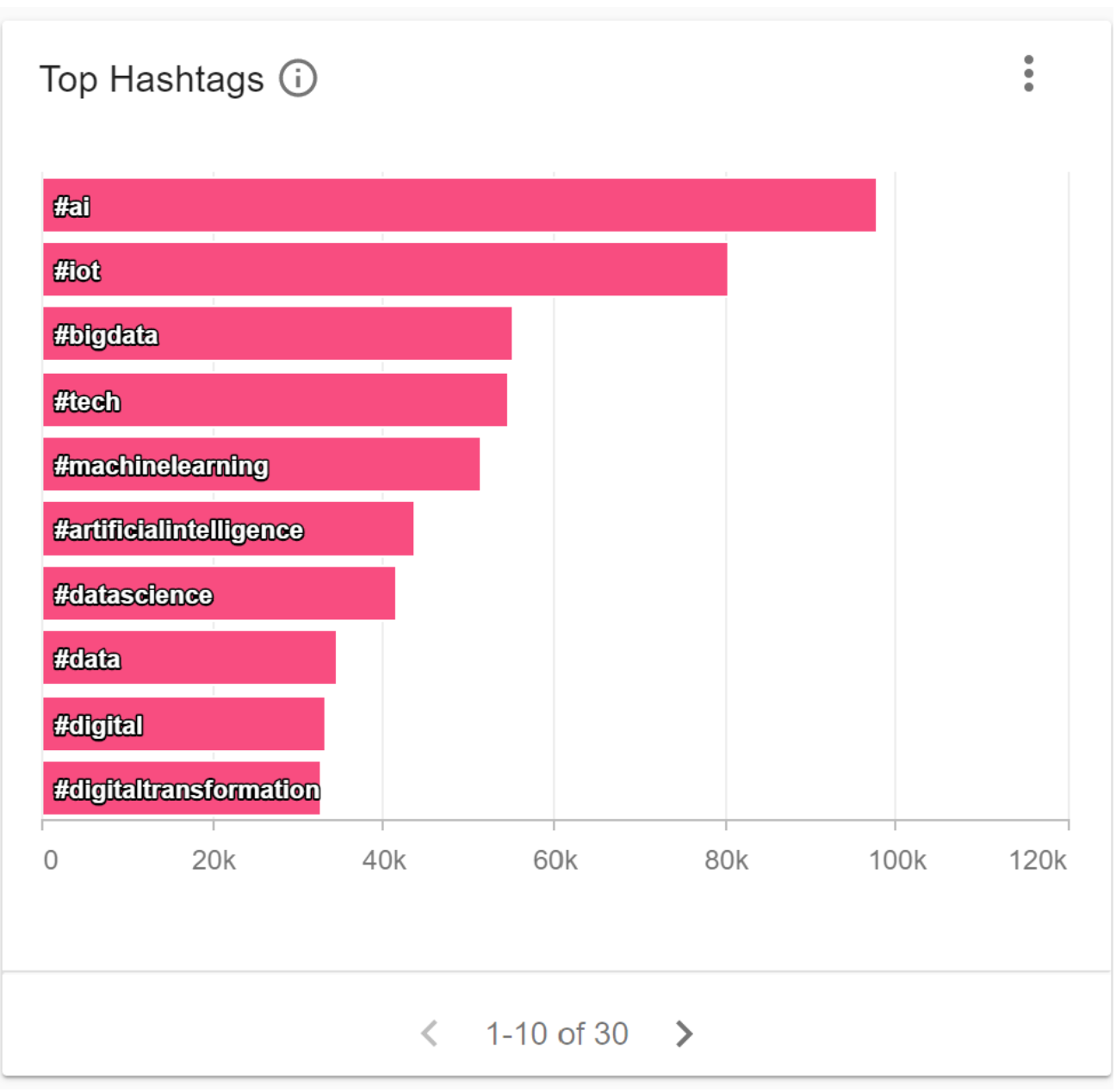
At this stage, it was worth using our own ‘human learning’ to curate ourselves which hashtags we wanted to dive deeper into, and continue to remove some of the surface level noise.
Taking #cybersecurity as an example, in the top negative keywords, we can see that hackers, criminals, malware, and risks are top of mind, and in the positive keywords, we find scientists to be a large topic area.

Considering the potential for mass leaks in shared personal information, particularly in a range of devices operating within the internet of things, a topic such as cybersecurity is of great importance. By using this methodology of filtering, we can continue down many paths to locate conversation areas that we want to analyse in more depth.
Taking this approach, mixing data-driven with ‘human learning’, we can view the audience as holistic beings, not devoid of other interests or conversations of importance to them. So we included another step. We started asking ‘what is top of their minds?’ To find the answer, we returned to those initial top hashtags, selected the ones that were both high ranking and unique, and used them as a filter on the audience, then took a closer look at their word clouds.
An important step in this process was to evaluate the data ourselves. Although #ai, #artificialintelligence #machinelearning and #ml were being used the most often, they were at their concept, the same type of thing. Similarly their surrounding keywords were generic, so we chose to recognise this, and then turn our focus to areas that would be of more use in a real-world context.
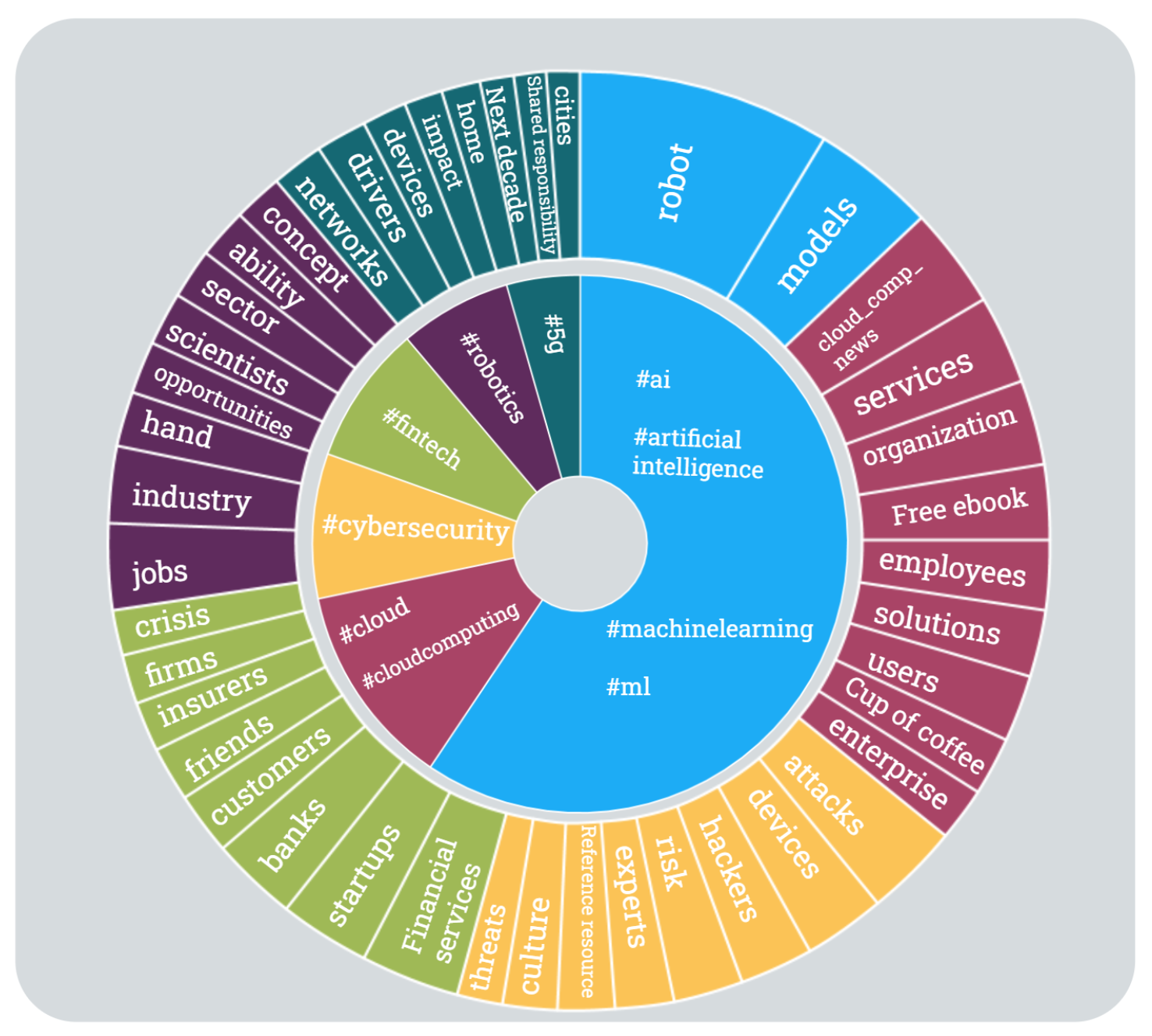
This data wheel represents the topics that are of most importance to the Internet of Things influencers. It is data pulled from their own conversations - their original tweets. The inside boxes are the main topic categories, and the outer boxes are subtopics, with the larger volume reflecting more mentions. Despite the #ai conversation making the most noise, it doesn’t contribute the most value when the aim is to find unique and relevant topics worth engaging so we stripped it back in the outer level.
On top of this, we were able to see how these conversations have developed over time. A couple of points of notice include the #robotics peak at the end of February, and the gradual increase of #5g conversations in recent months.
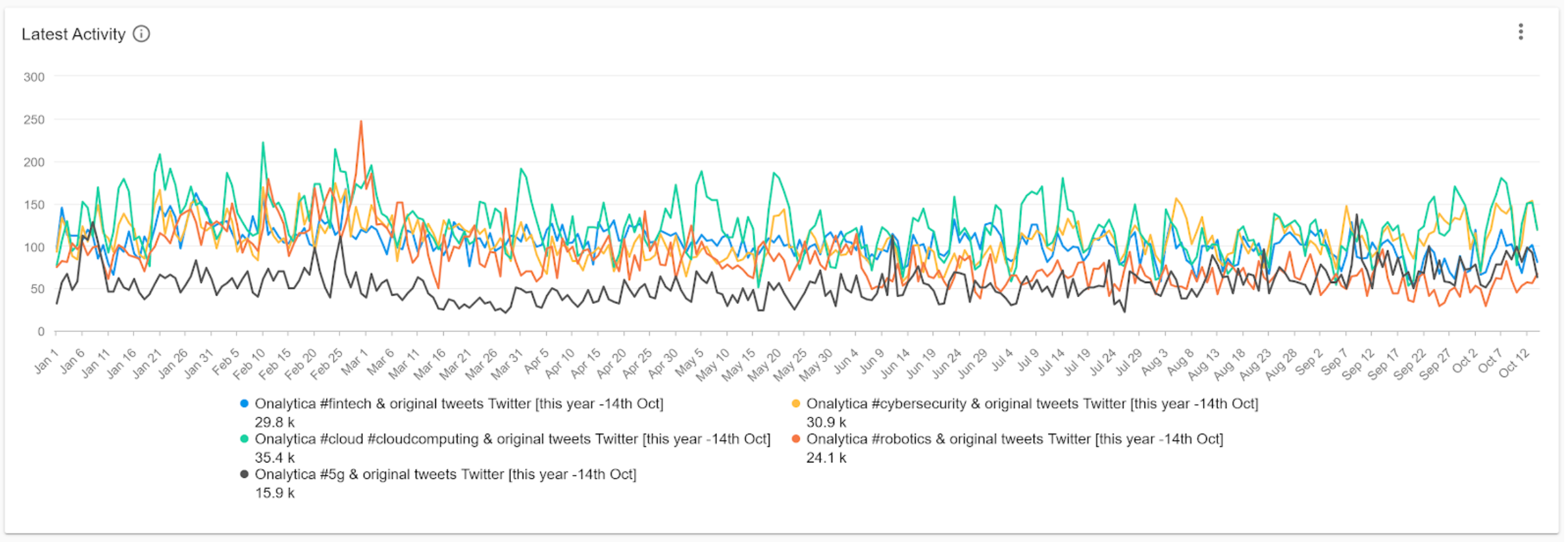
The Internet of Things is clearly an expansive topic, with broad subtopics too. The method we’ve laid out here could be used in anyone of these communities or conversations to continue digging further, and inform strategy.




